Did you remember having a couple games that you wished would come out on a rival system? I know I did a few times. I don’t think I understood the concept of exclusivity until around the time Street Fighter 2 came out for SNES. This also comes from a time before the internet, and the biggest source of gaming rumors was the lunch table at school. I think half of it came from kids trying to impress everyone claiming they had some mythical gem nobody else knew existed. It left me always wanting two games that I thought would never come to be.
When I was younger I was more of a Sega Master System fan than a NES fan. I think it’s simply because I played the Master System first as I still liked the NES and had a lot of games I enjoyed on it. While I had both systems, they weren’t always accessible to me. My parents were split up, and I had the Master System at my Dad’s and the NES at my Mom’s. Sometimes I just wanted the consistency of being able to play the same game after school. I always wanted to find Wonderboy in Monster Land for NES. It made sense for it to exist. At the video rental store, they had Shinobi, After Burner, Alien Syndrome and some other SEGA classics for the NES. Wonderboy wasn’t a far stretch.
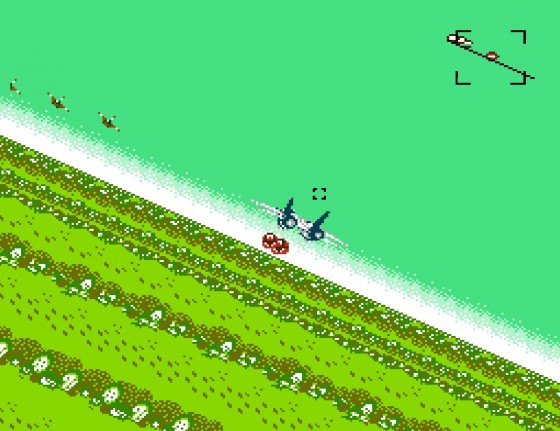
Ah Tengen, thank you for bringing me lots of games with questionable legality.
Little did I know that it did happen. In fact, it happened twice. When I had friends over and I showed them the original skateboarding, axe-throwing Wonderboy, they told me that it was a lot like Adventure Island. I didn’t find out until years later that this meant it was the exact same game as Adventure Island. Around 2002 I found out that a game called Saiyuki World released in Japan that was a version of Wonderboy in Monster Land with graphics themed after Journey to the West. Looking back, it was an okay version but I would have been head over heels for it when it was new. Unfortunately, only its sequel was localized.
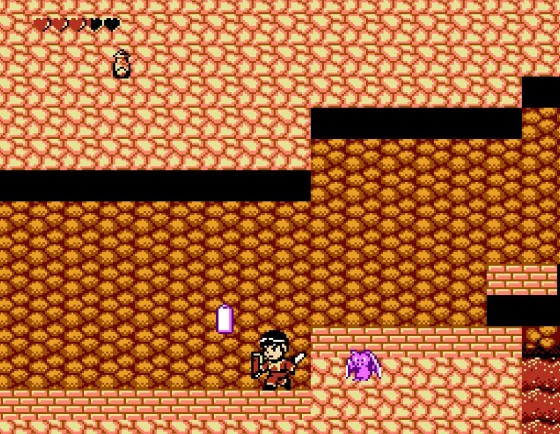
There’s no question about it, this is the Wonderboy I know and love.
The other game I was clamoring for was The Legend of Zelda for Sega Master System. Zelda was my favorite NES game and I was used to seeing Master System versions being a lot better than their NES counterparts. Nothing would ever be as good as what my imagination came up with of what a Master System version of Zelda would be. Maybe it would use the 3D glasses? Of course, I know now that this would never have happened. I was eight years old. I could dream, right?
Again, this was long before the era of the internet and the news passed me by that there actually was a decent Zelda clone on the Sega Master System already, although it didn’t hit store shelves until 1991. SEGA took their barbarian themed franchise and made Golden Axe Warrior. Since it came out so late it’s one of the harder to find Master System games. I never actually found a copy of it myself and didn’t get to check it out in depth until Sonic’s Ultimate Genesis Collection, or Sega Mega Drive Ultimate Collection for the folks in the UK, had it as an unlockable bonus.
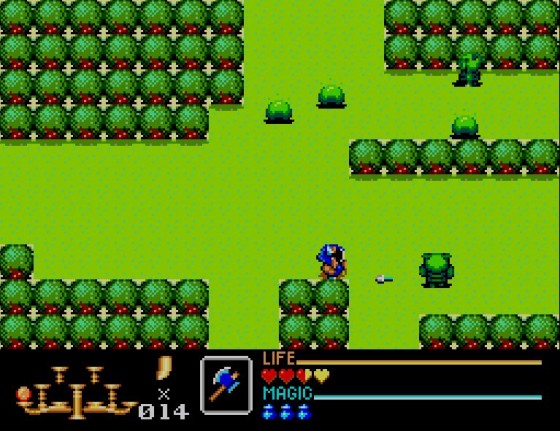
While it may seem shameless, it’s still a fun game and a great addition to the SMS library
For a game that was targeted towards a younger audience, it certainly has a harsh opening. You start off in a graveyard and the game tells you your parents were just murdered after Death
Adder raided the village of Firewood and, probably out of sheer irony, burnt it to the ground. He stole the nine crystals that protect your village from him even though this directly contradicts the opening text, but let’s not get into that. Also, the princess was murdered, so this isn’t a damsel in distress game. It’s about taking out your revenge in cold blood! It wouldn’t be Golden Axe otherwise.
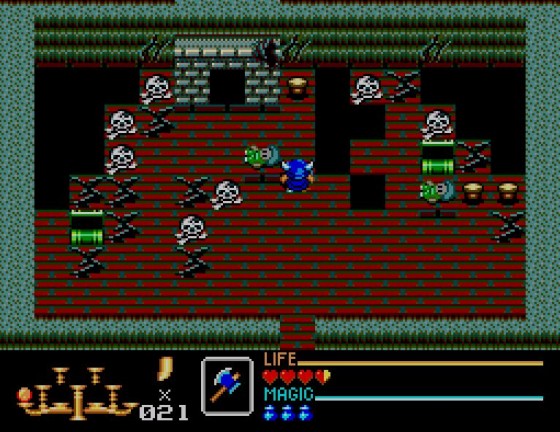
Hey, any of you kids want to see a dead body?
The game boasts a much bigger adventure than The Legend of Zelda but follows the format very closely. There’s ten labyrinths, instead of nine, and a much larger overworld. I feel like it’s not constructed as intuitively as Zelda. The Legend of Zelda had a very rich development and there’s a rhyme or reason to almost everything in the game. The game itself flowed very well and I think that’d be hard to capture in any clone of it. It’s like comparing generic whiskey to Jack Daniels. It’s pretty good but it just doesn’t stack up against the real thing.
While the combat in Golden Axe Warrior is a bit faster than Zelda, the hit detection is a bit sloppy and the game suffers most due to the limited buttons on the SMS controller. Since there were only two buttons, you get an attack button and button to bring up the menu. It’s better than the alternative, which would be having to get up and hit the pause button on the console itself to bring up the menu to change items.
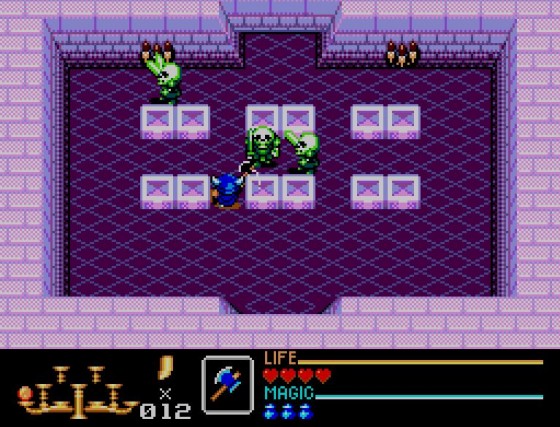
Get the Stalfos, I mean generic non-specific skeleton with swords!
It also takes a page out of Zelda II and adds magic and towns into the mix as well as some different weapons to use. There’s also places to save your game throughout instead of having to wait until you get a game over. It’s worth checking out if you have the collection for Xbox 360 or PS3, but I don’t think the game’s good enough to warrant the price tag for the actual cartridge unless you’ve checked it out and are really in love with it. Had I gotten this back in the day it would probably be one of the games I rave about.
However, if the Zelda gameplay is what you’re looking for, it doesn’t just stop there.
I got into the TurboGrafx-16 a bit later than the other systems. I ended up buying one on a whim at a flea market late enough that the games weren’t on store shelves everywhere, but they were being blown out pretty cheap. I ended up snagging a lot of classics for dirt cheap. Ironically one of the games I picked up as Dragon’s Curse, which is identical to Wonder Boy III: The Dragon’s Trap, with 16-bit graphics.
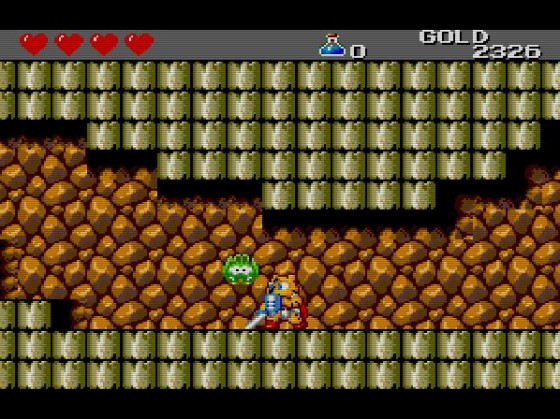
For some reason, the lion form was changed to a tiger on the TG16 version. I’ll never know why.
While the Master System received a Zelda “clone” later in it’s life cycle, the TurboGrafx 16 had an interesting title fairly early. Neutopia, brought to us by Hudson Soft, came to the scene in 1989, around a year after Zelda II. It’s styled more like the original game, with ample improvements, some of which would later be implemented in The Legend of Zelda: A Link to the Past.
Neutopia is often written off as a Zelda “ripoff”, but that doesn’t quite do it justice. It’s a great game on it’s own, and it’s one of my favorites on the system. It does change the formula a little by not having one single overworld map, rather the game is divided into four “spheres” which each contain two labyrinths. This kind of prevents the ability to skip around and do whatever you pleased like in The Legend of Zelda, but adds a bit of uniqueness.
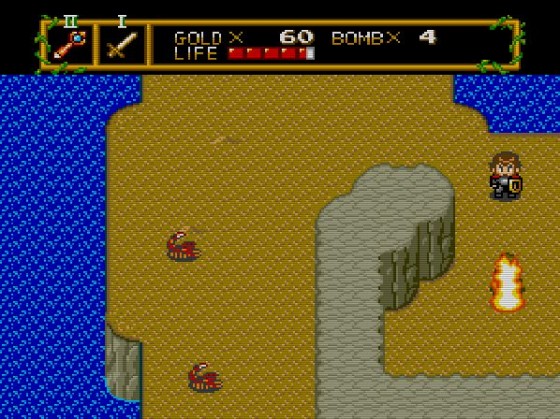
Why did I feel compelled to do this with the fire wand?
Although the control in Neutopia is a little stiff, it’s a good bit better than Golden Axe Warrior. It’s tile based movement, similar to The Legend of Zelda, although you can shoot your Fire Wand in eight directions. There’s some other interesting items in the game as well, such as a ring that turns all the enemies on the screen into weaker enemies. The world itself does seem a bit small and there’s only eight dungeons to the game. The music is fantastic too, with a lot of variety including music during boss fights.

There’s a dragon in my dungeon! To arms!
The story is a bit generic, we’re back to a damsel in distress situation, unlike Golden Axe Warrior. Princess Aurora was kidnapped by Dirth, who may or may not be a lawyer from Disney. He stole the eight medallions and scattered them across the land, sealed in eight crypts. You need to get the medallions back so you can get to the generically titled “Climactic Castle” where you save the princess and finish the game. In the beginning of the game, they tell you that if you complete your quest you will win the love of the princess, and they actually mean it. I guess your motivation this time is lust instead of heroism or bloodthirsty revenge. Fair enough, I suppose.
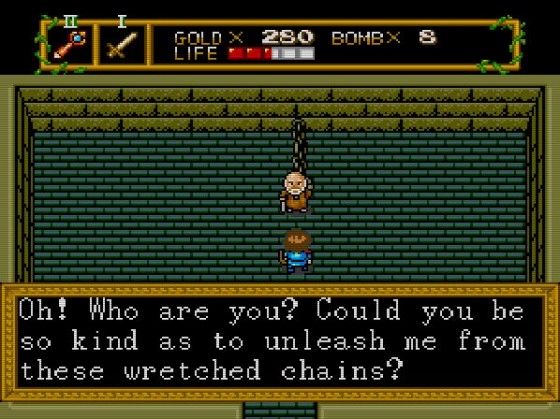
Actually, I can’t. It’s kind of depressing. At least it explains why people are in the dungeon.
If you have a TurboGrafx-16 and haven’t played Neutopia, it’s fairly easy to track down. It’s also available on the Wii Virtual Console and PlayStation Network. If you like Action RPGs, in particular the format of the original Legend of Zelda, you owe it to yourself to check it out.
In 1991, just before A Link to the Past, a sequel popped up. Neutopia II made a lot of improvements over the original, the biggest of which is smoothing up the control. Many of the same items from the first game return and some new ones are introduced such as boomerangs. Yeah, there’s boomerangs now. The tile based movement is gone, allowing you to walk in eight directions. Some of the later dungeons have multiple floors. The music is even better than the first game and I like the dungeon music in this one a lot.

Everything is better with zombies. Everything.
The story isn’t much more intricate than the first game. You’re the son of Jazeta, the hero from the original game. Your father left to investigate the appearance of monsters near Yurius Shrine. So, since the great hero vanished, you’re given a sword and shield and sent out into the land to go find him. It sounds like such a great plan. Now you need to go into the labyrinths to get items to move further in your quest to find your Dad. I don’t think anyone at Hudson is going to win an Oscar for the storyline, but the game is pretty fun nonetheless.
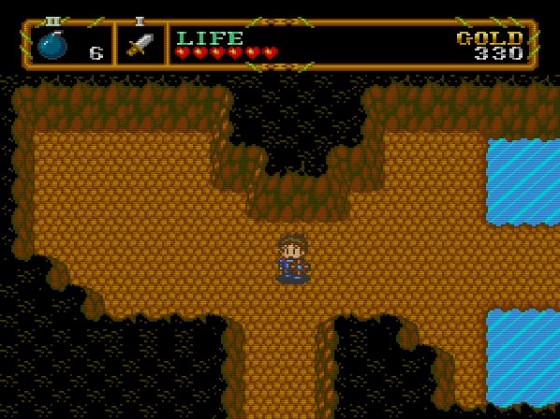
Why does it always seem like a good idea to go into caves in these games?
Neutopia II was released on the Wii Virtual Console, which I’d suggest over tracking down the HuCard unless you want to pay collector’s prices. I’d suggest it over the first, and they’re not really tied to each other much so you’re not missing anything if you play them out of order.
Although, I had a Genesis long before I had a TurboGrafx-16 or a SNES.
While there were a few games out there that could be considered clones of Zelda II, none of them are really worth bringing up. I don’t think very much really captured the feel the way the rest of these games capture the feel of The Legend of Zelda. Most of them were also for NES. Battle of Olympus is the most well known.
Probably the most notorious game to try to pass itself off as a Genesis alternative to A Link to the Past was the game with three names, Crusader of Centy, also known as Ragnacenty in Japan and Soleil in the UK. It released about two years after A Link to the Past and did a very good job of copying the graphic style. Now, I don’t want to be that person but when you make a game that looks a lot like another game that’s titled the “something” of “something”, you might want to name it a bit differently than “something” of “something”. Maybe they should have just stuck with the UK title and left it at that.
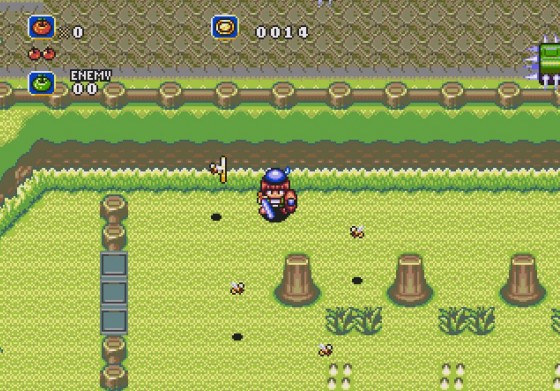
Oh God, not the bees! Anything but bees!
The story follows Corona, or whatever you name him. I chose Link. It’s his fourteenth birthday and that means he’s given a sword and shield. That’s the law of the land, apparently. You must seek out training to become a hero, and along the way you lose the ability to talk to people. Yeah, that’s right. Instead you can talk to plants and animals. That’s right, plants and animals. This helps you enlist the help of your pet dog. This doesn’t seem strange at all, right? Later on in the game you get to go back in time to access areas you weren’t able to in the present. Also, monsters have been sealed away underground and have been multiplying and are now coming to the surface.
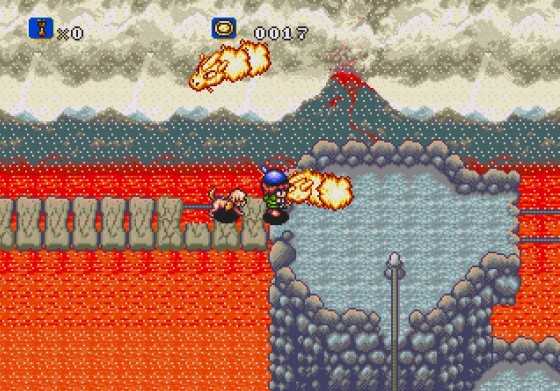
Grab your dog, and let’s venture into Death Mou…er…Hot Daisy. Yeah.
The gameplay is about what you’d expect from an action RPG, but the control seems very floaty. Corona swings his sword slow, but he can throw it as well, like a boomerang. What’s really weird, however, is that you don’t get items. You meet different animals that let you perform different actions. For example, if you equip the cheetah you can walk faster or if you equip Dippy the Dinosaur you can walk over anything that would normally damage you. It’s an interesting way to handle things and I feel it makes the game stand out a bit more.
Crusader of Centy is kind of a weird game but it’s really worth taking a look at if you haven’t already. There isn’t a Virtual Console release and the cart is fairly pricey unless you don’t mind getting the Japanese version. There’s no shortage of great action RPGs on Genesis, you might be better of trying to find a copy of Landstalker or Beyond Oasis until a digital release of Crusader of Centy shows up or it appears on a collection. While it certainly doesn’t trump A Link to the Past, it was decent substitute if you owned a Genesis instead of a SNES.
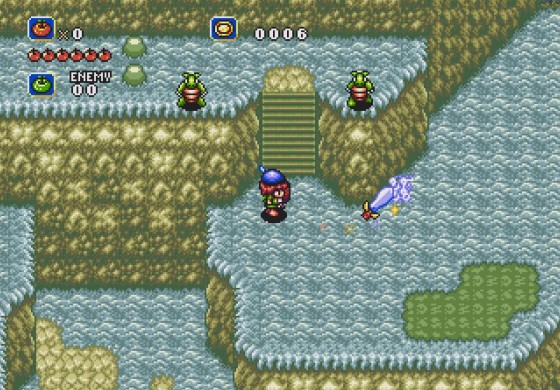
Who needs sword beams when you have a good throwing arm?
These titles should be enough to give you your Zelda fix if you for some reason don’t own a Nintendo console or are looking for a familiar but new experience. If it’s not enough, there’s one more that sticks out in my mind. It starts out on a ship in the ocean. There’s a bad storm, and you’re found on a beach. The plot heavily involves dreams and many of the people in the town have a weird kind of “twin peaks” feel to them. You also meet a female companion along the way who has a strange secret. Yeah, I’m talking about Alundra. It’s a fantastic game and the spiritual successor to Landstalker. That’s for another time, though.
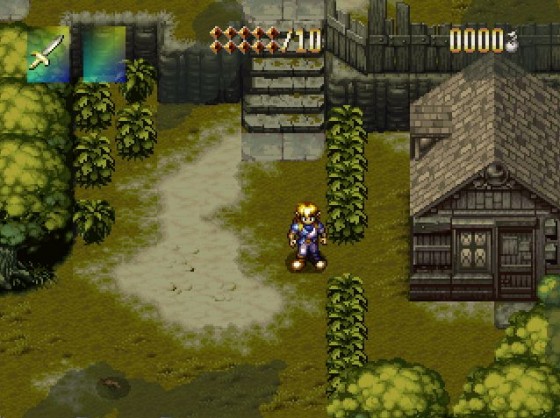
Oh, you thought I was talking about something else? It’s been that kind of day.
Are there any other Zelda clones you played that I missed? Did you have a Genesis instead of a SNES and want to share memories of a great facsimile of a rival systems A+ game? I want to hear about it. Comment below or send me a message on Facebook or Twitter.


